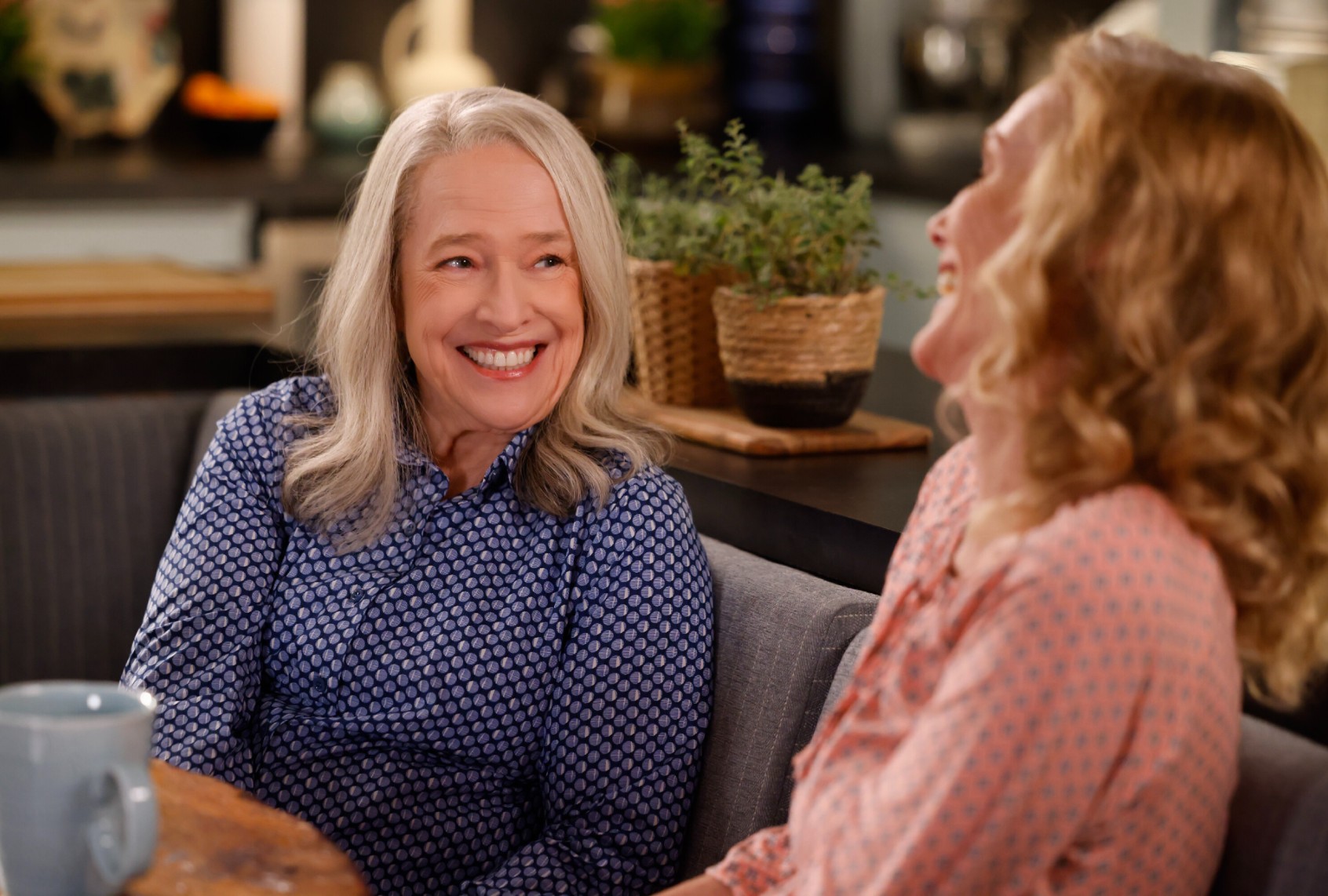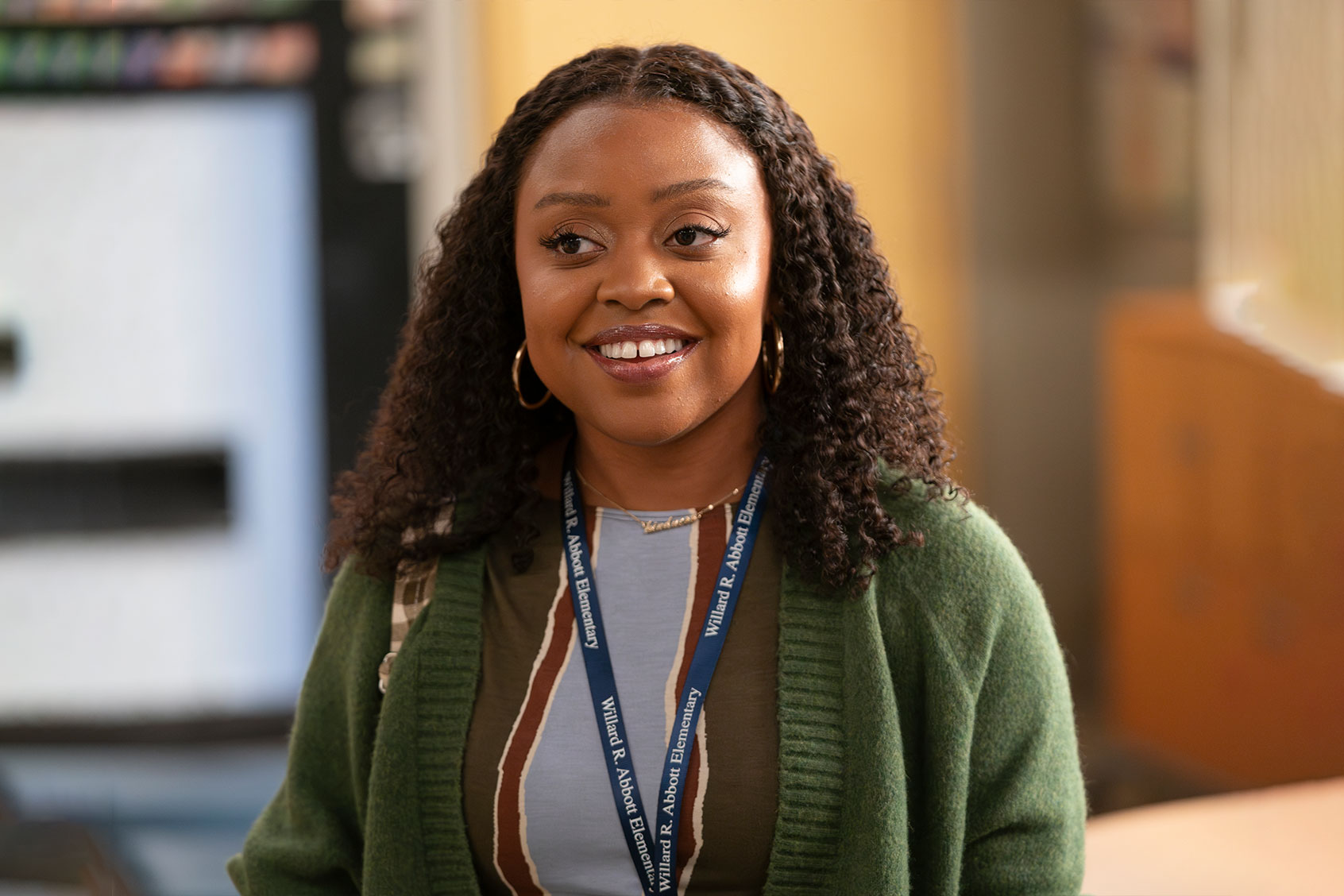Give it up for “Matlock” star Kathy Bates, who was greeted on Tuesday morning with an Emmy nomination for best actress in a drama. Bates scoring her 15th nod from the Television Academy wasn’t necessarily surprising, mind you. Her performance as Madeline “Matty” Matlock garnered strong reviews, as well as a shot at a Golden Globe in January. Her nomination also earned the 77-year-old actor a spot in the industry’s record books, making her the oldest best drama actress Emmy nominee.
The late Angela Lansbury, another revered CBS drama alumna, was the previous record holder. She earned her final nomination in 1996 at the age of 70. But then, Lansbury was a regular nominee thanks to her iconic portrayal of Jessica Fletcher on “Murder, She Wrote,” which tells you just how different the TV landscape was 30 years ago.
“Matlock” is the second highest-rated drama on CBS, which is the most-watched broadcast network, according to Nielsen. Yet Bates’ inclusion in this top category still counts as a minor miracle.
It would be three more years before a couple of American cable drama actors cracked the category in 1999, when Lorraine Bracco and Edie Falco scored nominations for their work on “The Sopranos.”
Falco ended up winning that Emmy, five years before Academy voters gave “The Sopranos” and HBO their first best drama Emmy in 2004. Within 10 years, the prestige TV era had critics wondering whether cable would render broadcast primetime obsolete.
Turns out that fear was a tad overstated, and more than a decade early. According to Nielsen’s monthly Gauge report, broadcast TV plummeted to 18.5% of overall viewing in June as streaming climbed to claim 46% of all total TV usage. This measure also marks the first time that broadcast TV’s audience share sank below 20%, a stat that begs for a pulse check.
Nevertheless, anyone who’s been watching streaming’s audience numbers creep upward may see that and shrug. Linear viewership has been steadily declining since Tony Soprano ruled television, with cable and broadcast usage dipping below 50% for the first time in July 2023. The true milestone hit in May of this year when the Gauge report indicated that streaming’s viewership surpassed broadcast (20.1%) and cable (24.1%) to claim 44.8% of that month’s audience.
That happened before Peacock’s “Love Island USA” became this summer’s social media sensation, to say nothing of the final season of “Squid Game” on Netflix (which failed to score in major categories).
In defense of those critics predicting broadcast’s demise, not even Netflix, Inc. could have predicted that streaming would conquer the small screen. Back then, CEO Reed Hastings was probably patting himself on the back for his role in murdering Blockbuster Video with his company’s innovative DVD rental-by-mail system.

(Sonja Flemming/CBS) Kathy Bates as Madeline Matlock and Julie Hagerty as Bitsy in “Matlock”
Today, all of Bates’ category competitors work for streaming services, including Keri Russell, of Netflix’s “The Diplomat,” “Severance” star Britt Lower and “Bad Sisters” lead Sharon Horgan, whose shows are on Apple TV+, and Bella Ramsey of “The Last of Us,” with episodes premiering on HBO and HBO Max at the same time.
“Matlock” is the second highest-rated drama on CBS, which is the most-watched broadcast network, according to Nielsen. Yet Bates’ inclusion in this top category still counts as a minor miracle.
The last time a broadcast show scored a best drama actress nomination was 2019, when Viola Davis’ performance in ABC’s “How to Get Away with Murder” earned a nod along with Mandy Moore for NBC’s “This Is Us,” which was the last network drama to get a top drama Emmy nod in 2021.
“This Is Us” star Sterling K. Brown scored a lead drama actor nomination in 2021, too. On Tuesday he showed up on the best drama actor list for his turn on Hulu’s “Paradise,” joining Noah Wyle (“The Pitt,” from HBO Max), Adam Scott (“Severance”), Gary Oldman (Apple TV+’s “Slow Horses”), and Pedro Pascal (“The Last of Us”).
“Severance” scored 27 nominations for the 2025 Emmys, with HBO Max’s limited series “The Penguin” landing 24, including individual nods for stars Colin Farrell and Cristin Milioti as well as a slot in the best limited or anthology series race. There, it will compete against FX on Hulu’s “Dying for Sex,” along with Netflix’s “Black Mirror,” “Monsters: The Lyle and Erik Menendez Story,” and “Adolescence,” which earned 13 nominations.
Apple TV+’s comedy “The Studio” earned 23 nominations, with Disney+’s “Star Wars” drama “Andor” landing 14, and FX on Hulu’s “The Bear” nabbing 13.
Even so, HBO and HBO Max still claim leadership bragging rights courtesy of 142 Emmy nominations spread across 20 of its shows, led by 23 nods for “The White Lotus,” 16 for “The Last of Us,” 14 for “Hacks” and 13 for “The Pitt.” Netflix racked up 120 nominations overall, while ABC led the broadcasters’ haul with 38.
We need your help to stay independent
None of this is news by awards season standards. Cable started devouring broadcast TV’s Emmy nominations breakfasts from the mid-aughts onward, until Netflix and Amazon showed up in 2013’s races. In our current “post-peak, but still too much TV” era, it’s commonly accepted that broadcast is an award season afterthought, although critical stalwarts like “Abbott Elementary” continue to muscle their way into competitions.
Indeed, broadcast comedies have consistently held at least one slot in the top Emmy categories in recent years; ABC’s “Abbott Elementary” and its star Quinta Brunson scored nods this year, with Brunson’s co-stars Janelle James and Sheryl Lee Ralph claiming best supporting actress nods.
Rounding out the list of Brunson’s competition in the best comedy actress category are Uzo Aduba for “The Residence” and Kristen Bell for “Nobody Wants This,” two more Netflix entries, along with Ayo Edebiri for “The Bear” and Jean Smart for “Hacks.”

(ABC/Disney/Gilles Mingasson) Quinta Brunson in “Abbott Elementary”
“Abbott,” meanwhile, is the sole broadcast TV comedy going up against “The Bear,” “Hacks,” “Nobody Wants This,” Hulu’s “Only Murders in the Building,” Apple TV+’s “Shrinking” and “The Studio,” with FX’s “What We Do in the Shadows” repping basic cable. . . and streaming, since it also runs on Hulu.
While “Love Island USA” superstars Huda Mustafa and Chris Seeley are dominating your coworkers’ break room conversations at the moment – if you know, you know – markedly fewer folks are yapping about the reality and game shows currently keeping the lights on at CBS, NBC, ABC and Fox. That may not rank highly on our list of pressing concerns at the moment, but it may be worth paying attention to as one indicator that our widening wealth gap is showing up on TV.
After all, if streaming is where the audience is going, why continue to devote resources to broadcast? The eternal, rock-solid reason is that broadcast TV is still freely available to everyone, including viewers who can’t afford streaming subscriptions and/or live in areas lacking stable broadband access. It’s an especially vital resource for accessing news and information.
In rural areas lacking local stations with newsrooms — which describes around 34% of such communities, according to a 2024 local news survey conducted by Pew Research — broadcast news remains the primary TV source of news and information. And primetime ad revenue supports those newsrooms. As those audiences shrink, so do the dollars networks can command for ads, and the paychecks they can offer top talent. (For example, Lester Holt recently left his anchor chair at “NBC Nightly News” where he reportedly earned $10 million a year. His replacement, Tom Llamas, is estimated to earn around $2.5 million annually, according to The Ankler.)
If streaming is where the audience is going, why continue to devote resources to broadcast? The eternal, rock-solid reason is that broadcast TV is still freely available to everyone, including viewers who can’t afford streaming subscriptions and/or live in areas lacking stable broadband access.
On top of that are the political threats. While President Trump’s proposed 100% tariff on movies produced outside the United States hasn’t significantly moved closer to reality since he tossed that grenade in May, he has threatened major broadcasters’ licenses.
Trump sued ABC for defamation and CBS on even flimsier grounds concerning that network’s “60 Minutes” interview with Democratic presidential nominee Kamala Harris before the 2024 election. ABC’s parent company, Disney, and CBS’ owner, Paramount Global, paid multimillion-dollar settlements to Trump instead of standing up for the First Amendment in court.
Paramount is believed to have done so to prevent the Federal Communications Commission’s chairman, Brendan Carr, a Trump appointee, from stalling its pending merger with Skydance Media. Regardless, the FCC’s probes into right-wing-generated complaints against ABC, NBC and CBS are ongoing.
For those reasons and others, voices that are calling for the death of broadcast networks both from within the industry and on Capitol Hill will likely get louder.
There are always caveats to consider when it comes to the summertime ratings and the Emmys. Since the conventional broadcast season is over, there are no live sports telecasts to boost overall network numbers. When the NFL’s pre-season kicks in, the networks will recoup some of those losses. Sports’ perpetually robust viewership proves that conventional broadcast still dominates the live TV space, even now.
Start your day with essential news from Salon.
Sign up for our free morning newsletter, Crash Course.
Regarding the Emmys, creativity and originality always play a part in swaying voters, along with popular sentiment. The Wrap’s Steve Pond also notes that there were fewer overall submissions for the second year in a row, which meant less competition for major category nominees than usual, yet fewer inspiring surprises.
However, our definition of good TV is always subjective. The most-watched broadcast TV show of the recently ended 2024-2025 season, according to Nielsen, is “Tracker,” which is highly entertaining, but not a significant source for divining meaning about America’s political and cultural health. Nor is it an unexpected interpretation of a vintage TV title anchored by a superb performance, a la “Matlock. Those are the details that sway Emmy voters.
Tuesday’s top drama list includes two series that straddle cable and streaming, HBO’s “The Last of Us” and “The White Lotus,” which drive conversations about our deteriorating humanity and rising classism.
“Andor,” “Severance” and its fellow Apple TV+ drama “Slow Horses,” as well as Netflix’s “The Diplomat” and “Paradise” comment on our cultural politics and anxieties in their respective ways. So does “The Pitt,” which found its rhythm by replicating the tone and the release cadence of a superb if conventional network medical show.
Yet the best drama race doesn’t include any hour-long series currently airing on broadcast, including “Matlock.” All the more reason to root for Bates, one of the few contenders in this mix proving that worthy institutions earn their status by demonstrating their durability in rapidly changing times. We’d be foolish to count them out too soon.
The 77th Emmy Awards will air Sunday, Sept. 14 on CBS and stream on Paramount +.
Read more
of our past award show coverage


